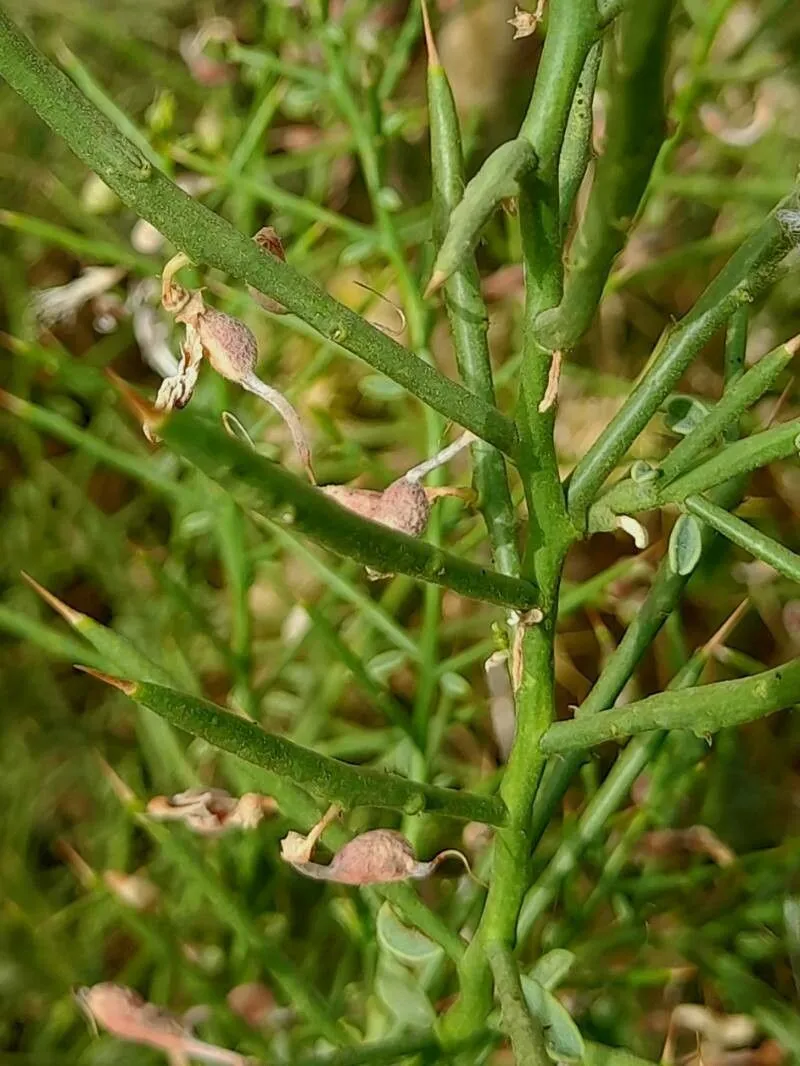
Author: Medik.
Bibliography: Vorles. Churpfälz. Phys.-Ökon. Ges. 2: 398 (1787)
Year: 1787
Status: accepted
Rank: species
Genus: Alhagi
Vegetable: False
Observations: SE. European Russia to Xinjiang and NC. India
Caspian manna, scientifically known as Alhagi maurorum, is a resilient and distinctive species belonging to the Fabaceae family. This hardy plant is native to a vast geographical range, stretching from southeastern European Russia through to Xinjiang in China, and reaching as far as northern central India. It thrives particularly well in arid and semi-arid environments, demonstrating remarkable adaptability to harsh climatic conditions.
First botanically described by the German botanist Friedrich Kasimir Medikus in 1787, Caspian manna has since been recognized for its unique characteristics and ecological significance. The plant typically exhibits a dense bushy growth with thorny branches, offering a robust physical structure which aids in its survival in challenging conditions. Its leaves are small and oblong, which helps minimize water loss, a crucial adaptation for its often dry and inhospitable habitats.
The presence of Caspian manna across such a broad geographic spectrum highlights its importance in local ecosystems. It provides ground cover that prevents soil erosion, a particularly vital function in the semi-arid regions it colonizes. Additionally, being a member of the Fabaceae family, Alhagi maurorum plays a role in nitrogen fixation, enriching the soil and promoting the growth of other plant species.
While the plant is sometimes considered a nuisance due to its thorny nature and tendency to spread rapidly, causing challenges for agricultural activities, it remains a plant of interest for its resilience and ecological contributions. Its ability to withstand extreme weather and poor soil conditions makes it a subject of study in understanding plant survival strategies and potential agricultural applications in arid environments.
In summary, Caspian manna (Alhagi maurorum) is a noteworthy species within the Fabaceae family, playing a significant ecological role in various arid and semi-arid regions from southeastern Europe to Central Asia. Not only does it embody fascinating survival adaptations, but it also contributes to soil health and stability, making it an important plant both ecologically and scientifically.
Ara: ‘aaqool
Eng: camelthorn, caspian manna, persian mannaplant, camelthorn-bush
Afr: kameeldoringbos
Swe: mannaklöver
En: Caspian manna, Persian mannaplant, Camelthorn, Camelthorn-bush
Af: Kameeldoringbos
Ar: ‘aaqool, عاقول مغربي
Az: Adi dəvətikanı
Bg: Камилски бодил
Cs: Manovec mouřenínský
Fi: Kamelinkuropalko
He: הגה מצויה
Kk: Кәдімгі жантақ
Ko: 자밀
Ml: ഒട്ടകമുള്ള്
Nv: Chʼil hoshí
Fa: خار انگبین
Ru: Верблюжья колючка мавров
Sd: ڪانڊيرو
Sv: Mannaklöver
Taken Jun 5, 2022 by Julian Felten (cc-by-sa)
Taken Oct 10, 2020 by Dincer Turgut Dincer Turgut (cc-by-sa)
Taken Mar 23, 2018 by Siddharth (cc-by-sa)
Taken Aug 6, 2020 by javad54 (cc-by-sa)
Taken Jul 18, 2020 by P I (cc-by-sa)
Taken Jul 29, 2014 by EOL − juniperus_scopulorum (cc-by-nc)
Taken Jul 13, 2018 by Mehmet Basbag (cc-by-sa)
Taken Jan 1, 1900 by EOL − Eitan f (cc-by-sa)
Taken Jul 29, 2014 by EOL − juniperus_scopulorum (cc-by-nc)
Taken Jul 18, 2020 by P I (cc-by-sa)
© copyright of the Board of Trustees of the Royal Botanic Gardens, Kew.
© copyright of the Board of Trustees of the Royal Botanic Gardens, Kew.
© copyright of the Board of Trustees of the Royal Botanic Gardens, Kew.
Taken Oct 13, 2018 by Mehmet Basbag (cc-by-sa)
Taken Sep 5, 2019 by Fedan Hacizade (cc-by-sa)
Taken Sep 5, 2019 by Fedan Hacizade (cc-by-sa)
Taken Apr 7, 2022 by Abdulghaffar Alirezaie (cc-by-sa)
Taken Apr 18, 2021 by fayaz jamali (cc-by-sa)
Taken Jul 3, 2022 by M. Hedayat (cc-by-sa)
Taken Sep 5, 2019 by Fedan Hacizade (cc-by-sa)
Taken Apr 7, 2022 by Abdulghaffar Alirezaie (cc-by-sa)
Taken Jul 7, 2021 by Seyed M. Fatemi (cc-by-sa)
Taken Jul 3, 2022 by M. Hedayat (cc-by-sa)
Taken Sep 5, 2019 by Fedan Hacizade (cc-by-sa)
Taken Apr 7, 2022 by Abdulghaffar Alirezaie (cc-by-sa)
Growth habit>: Shrub, Subshrub
Ph maximum: 7.5
Ph minimum: 7.0
Light: 8
Atmospheric humidity: 3
Soil nutriments: 3
Family: Myrtaceae Author: (F.Muell.) K.D.Hill & L.A.S.Johnson Bibliography: Telopea 6: 402 (1995) Year: 1995 Status:…
Family: Rubiaceae Author: Pierre ex A.Froehner Bibliography: Notizbl. Bot. Gart. Berlin-Dahlem 1: 237 (1897) Year:…
Family: Sapindaceae Author: Koidz. Bibliography: J. Coll. Sci. Imp. Univ. Tokyo 32(1): 38 (1911) Year:…
Family: Asteraceae Author: A.Gray Bibliography: Pacif. Railr. Rep.: 107 (1857) Year: 1857 Status: accepted Rank:…
Family: Aspleniaceae Author: (Cav.) Alston Bibliography: Bull. Misc. Inform. Kew 1932: 309 (1932) Year: 1932…
Family: Aspleniaceae Author: (Sw.) R.P.St.John Bibliography: Ferns S.E. States: 241 (1938) Year: 1938 Status: accepted…